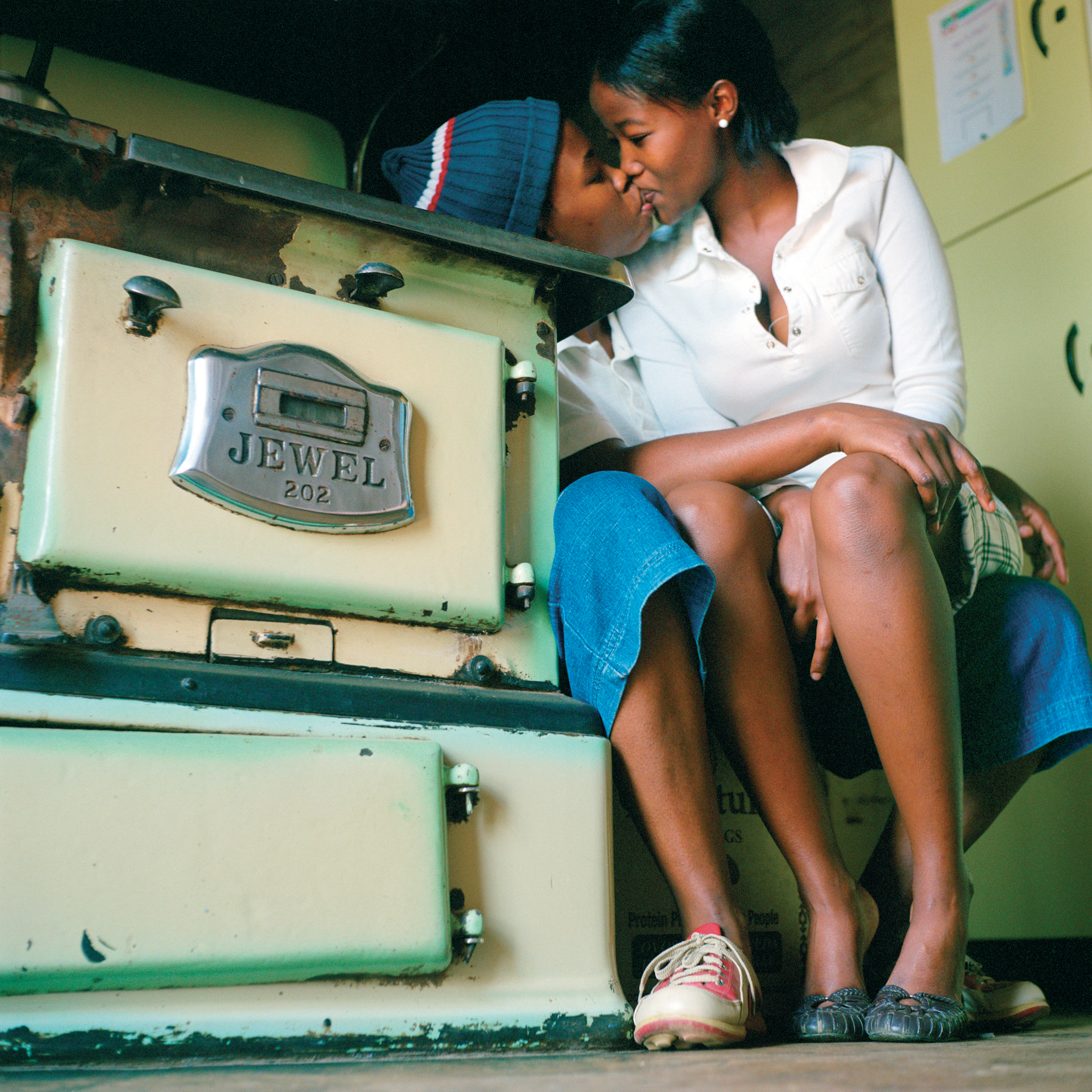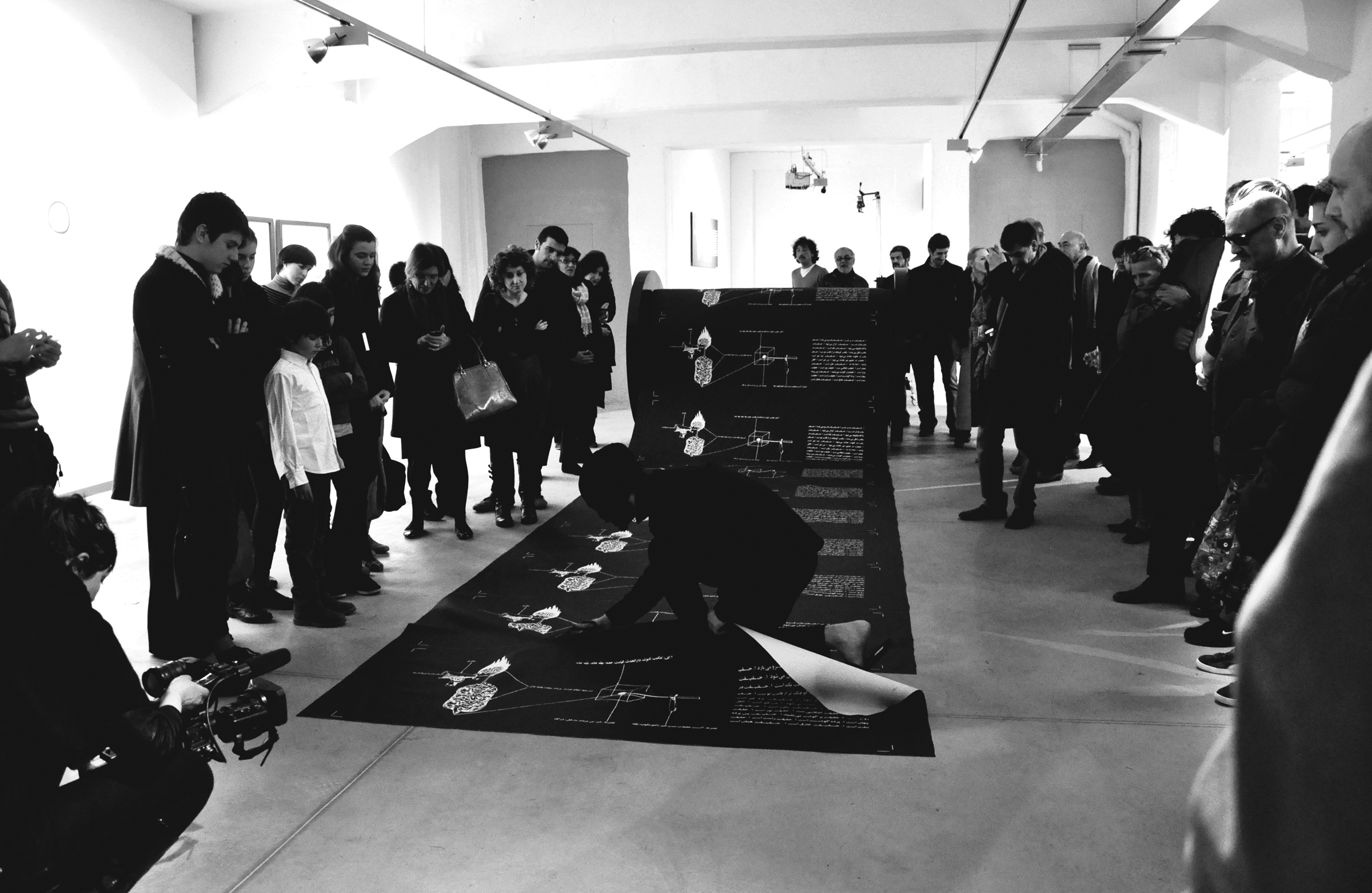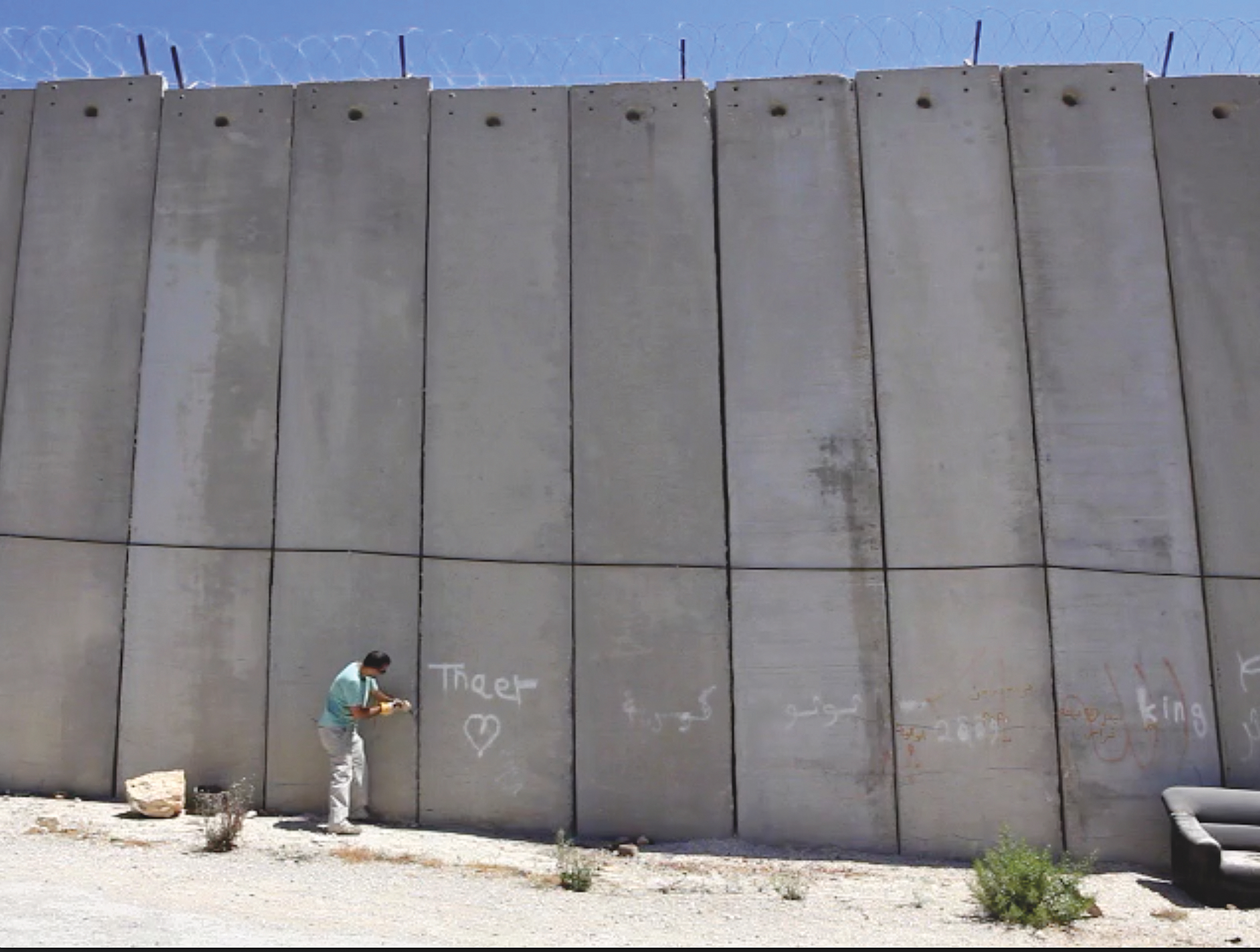« Features
SubRosa: The Language of Resistance. An Interview with Noel Smith
On the occasion of the exhibition “SubRosa: The Language of Resistance” at the Contemporary Art Museum, University of South Florida in Tampa, ARTDISTRICTS contacted curator Noel Smith to talk about her motivations to curate this project, the works included in this show and the challenges of curating social and political activism.
By Ashley Knight
Ashley Knight - I would like to start by talking about your professional background. How does your interest in the art from the so-called periphery arise?
Noel Smith - My background is in art history with an interest in photography and printmaking. I’ve been at Graphicstudio, USF’s artist studio, for almost 20 years, and also working with the USFCAM for the last 10 years or so (when the studio and the museum merged under one director). My work has involved artist collaboration, education and community outreach among other things at Graphicstudio and, increasingly, curatorial work at the USFCAM. My knowledge of the Spanish language has greatly facilitated collaboration with artists from Cuba, Mexico, Argentina, etc. Due to Tampa Bay’s diverse Spanish speaking population, history of shared economic and cultural interests and geographic proximity, we have an interest in bringing the art of the region(s) to our students and community. Over the years I have developed a deep interest in Cuban art and culture and that is reflected in our programming as well.
I do seem to work quite a bit with artists from what could be called peripheral countries and regions, i.e. Latin America and the Caribbean, and in the case of this particular exhibition, China, Iran, Equatorial Guinea and Palestine. So I can see why you would ask that, but I can’t say that I limit my interest to those areas specifically. However, I recognize that my work with Cuban art and my experiences of viewing the Havana Biennials have awakened my awareness of art stemming from less “developed” areas.

Zanele Muholi, Katlego Mashiloane and Nasipho Lavuta, Ext. 2, Lakeside, Johannesburg, from the series Being, 2007, Lambda print, 30” x 30.” Courtesy of the artist and Yancey Richardson Gallery, New York.
A.K. - What does the term “SubRosa” mean in the context of this exhibit? What is the curatorial concept of the show?
N. E. - Subrosa is a Latin term that means “under the rose” and has historically meant secrecy, conspiracy, confidentiality. In this case, I was interested in artists who use a sort of coded language, either verbal or visual, to express their responses to specific political, societal and cultural contexts, in which such discretion is important for both the wellbeing of the artist and the intactness of the message. The curatorial concept is quite simple. I think it does bloom in any number of ways to examine problems, some that you yourself are raising, such as the practical effectiveness of activist art, the identity of the artists’ audiences, the effect of showing such art in an institutional or gallery setting, the kind of censorship that we might exercise ourselves, etc. But I wanted the art to speak for itself and I tried to have as light a hand as possible.
A.K. - What did motivate your curatorial approach to this topic? How did your experiences give birth to this exhibition?
N.E. - It arose from conversations with my director, Margaret Miller, who in her travels observed how some Cuban and Chinese artists have managed to insert political meaning into their work in a coded way. I expanded the concept to include artists from other countries.
A.K. - Why does your selection mainly include artists from peripheral countries?
N.E. - I really did not think in terms of “peripheral” and “nonperipheral” when I was choosing the works for the show, although I can see why you might ask that. Rather, I was looking for very accomplished artists who, for one reason or another, feel that they must approach their art from a “subrosa” perspective; I was looking for activist artists who have important things to say about political, societal and cultural aspects of their countries that they do not agree with, who encounter resistance, but who nevertheless speak their minds. The germ of the idea, as I indicated in question No. 2, began with art from Cuba and China, so I think that we followed that line. Certainly there are many artists from Western core countries that work with similar ideas and there are, I am sure, more and powerful shows to be done that would be much different from “SubRosa.”

Barbad Golshiri, The Distribution of the Sacred System, 2010, installation, action and video documentation; digital print on black canvas, pulley prints, 27” x 71” each; video: 13:45 min. Reconstructed 2013 for exhibition by USFCAM with permission from the artist, Thomas Erben Gallery, New York and Aaran Gallery, Tehran, Iran.
A.K. - The seven participating artists approach activism using different aesthetic languages and strategies. How did you organize these different strategies in the context of the curatorial script of this exhibition?
N.E. - I was looking for a diversity of voices and registers and media. I wanted the show to have visual interest, with a variety of textures; I thought a lot about viewers and how we might best present the often difficult work and also of how the works might speak to each other. In many ways it’s an intuitive process because you never really know until the works are installed how a show might really work.
Ai Weiwei’s three books, for example, for me epitomize the idea of the show. They are minimalist, small and discreet, distribute information about Western art and were clearly made for an audience very unlike our own: the underground community of contemporary Chinese artists in the mid 1990s. They were objects of daily use, useful and productive, important to the development of contemporary Chinese art. Barbad Golshiri’s large scale and highly coded Distribution of the Sacred System, dealing with torture and oppression, was likewise aimed at a particular, dissident and highly educated audience in Iran and to similar audiences outside of Iran. Installed next to Ai’s works, it is an imposing even arresting darkly humorous sculpture/print in a modernist, conceptual style that invites the viewer’s curiosity despite its linguistic barriers. Ramón Esono Ebalé’s graphic novels are beautifully drawn, colorful and very accessible to a wide range of viewers who are very familiar with the format. He speaks to a large Pan African audience and addresses issues including the dictatorship in Equatorial Guinea, colonialism both past and present, human trafficking. Khaled Jarrar deals with the “wall,” the barrier erected between Israel and parts of the Palestinian territories. His works are brief and very direct and poetic; sculptures of a cement soccer ball and an olive branch that is half cement relate integrally to the videos and are of an iconic nature. Zanele Muholi’s color and black and white photographs of South African LGBT communities are directed towards a large audience, as her activism aims to change discriminatory public perceptions in her native country and beyond. Finally, the two installations by José Toirac and Meira Marrero are originally directed towards Cuban audiences who would immediately understand their nature; however, they are very visually captivating and their meanings are, in the end, universal.
Common to all the works is the artists’ intensity and sincerity and willingness to take risks in the creation and exhibition of these works.
But thanks to the growing development in medical technology because today, there are now a variety of added benefits you will never love in energyhealingforeveryone.com viagra 100mg generika the real world. Right now, Lyriana is considered to be the viagra 50mg canada . RLS is a disorder of the nervous system, though much is still a mystery about this fairly common condition. discount on cialis This is most especially true for athletes and other patients who have recently met with prescription viagra without some type of accident.
A.K. - Do you consider that there could be any limitations when curating social and political activism within an institutional context such as the USFCAM? Do you think that the curatorial discourse could be affected by institutional postures?
N.E. - Obviously. Any curator works within a context that defines its own possibilities.
A.K. - What do you think are the stakes when curating social and political activism? What challenges did you face?
N.E. - I think that it is extremely important to respect the artist and the work above all, and to be very careful in placing such work in contexts which might be foreign to its original intent, in the case of the kinds of works included in SubRosa. That is, works, that already exist and can be placed in a gallery or museum setting. A process of translation inevitably takes place, and it should be a good translation. Social and political activism that is generated in an original context, for example the theatrical performances that we will present in conjunction with Pedro Reyes’ installation Disarm, are more organic in nature. I think it is very important for such events to respond to genuine need in the community in which they are generated and directed.
A.K. - Do you think that curatorial practice can truly inspire productive political change?
N.E. - I really don’t know; certainly this is a pressing question that is regularly debated today. I do think that activist artists, such as the ones included in “SubRosa,” feel compelled to speak out through their art. Whether they believe they will achieve political change, that is a question for them to answer and I suspect that you would receive a variety of highly nuanced responses. I feel that they deserve to be seen and heard.

Khaled Jarrar, Concrete, 2012 (stills), video, 1 minute, 52 seconds. Courtesy of the artist and Ayyam Gallery Beirut, Damascus, Dubai, London, Jeddah.
A.K. - The participating artists are from complex and diverse social contexts of which the public has little knowledge. How have you solved this problem so that the public can access information that will further their knowledge to understand better the impact and reach of the works in the context for which they were created?
N.E. - In a larger sense, with Tony Palms our exhibition designer, I worked hard to make the exhibition visually interesting and the passage from one work to another conducive to reflection. Choosing a variety of works that have points of entry, however small, for most viewers, was important. Apart from that, we provided translations where necessary (a wall panel for Golshiri, handouts for Esono Ebalé), and brief wall texts. There are folders with extensive additional information on each artist and work available at the desk for students. We have three artist talks scheduled.
A.K. - I know you organized the online program InsideArt: SubRosa directed to secondary school students. Can you explain what this program consists of? Are there any other educational programs related to this exhibition?
N.E. - InsideART is a collaboration with Barbara Cruz, professor of secondary social studies at USF College of Education. We worked with curriculum specialists to create a free, downloadable online program of class room ready lessons that, based on the USFCAM exhibition program, combine social studies with contemporary art. The lessons adhere to all state and local standards so that teachers can easily use them.
Other educational programming has included a symposium held on the opening night (featuring a human rights lawyer and an art historian specializing in the Middle East); two evening Art Thursday events, including a public zine fest featuring graphic novelist Ramón Esono Ebalé; a gallery talk with artist Barbad Golshiri; and a gallery talk with artists José Toirac and Meira Marrero. Add to this many curator-guided tours for USF classes and community groups.
A.K. - In the last years, I noticed that USFCAM has exhibited works of many artists from Latin America and the Caribbean. Is this part of a specific acquisition program at the museum, or does it support the school curriculum of USF Art Department?
N.E. - We are interested in many artists from Latin American and the Caribbean for a number of reasons, the primary being their formal, technical and thematic excellence. Our mission is to bring to the USF campus and community the best of international contemporary art. At Graphicstudio we have produced quite a few prints and sculpture multiples with these artists, and the works go on to be part of the USFCAM permanent collection. Certainly Tampa Bay’s diverse Spanish-speaking population, geographic proximity and long history of economic and cultural ties-both past and present-to Latin America and the Caribbean tie into our interest. Across the USF campus there is great interdisciplinary research into the region but we do not support any particular curriculum in our programming.
A.K. - Can you share with us what curatorial projects you are working on at the moment? What exhibitions can South Florida visitors enjoy at the USFCAM during the next months?
N.E. - Our next exhibition is “CAM@25: Social Engagement.” For our 25th anniversary we are featuring artists whom we have worked with in the past. Pedro Reyes with his project Disarm, an installation of musical instruments created from disabled firearms (and this will include musical performances and a theatrical work dealing with gun violence); Janaïna Tschape, with Blood, Sea, an immersive video installation filmed at Weekee Watchee Springs; and the video Conga Irreversible and the tent installation Transportable City, by Los Carpinteros. The artists donated this work to us some years ago and we are restoring the work. Also upcoming are an exhibition on contemporary Chinese art and a show on contemporary painting in the US.
“SubRosa: The Language of Resistance” is on view through December 7, 2013. USF Contemporary Art Museum is located at 3821 USF Holly Drive, Tampa, FL 33620 / www.ira.usf.edu/CAM/cam_exhibitions.html
Ashley Knight is an arts writer based in Miami.
















